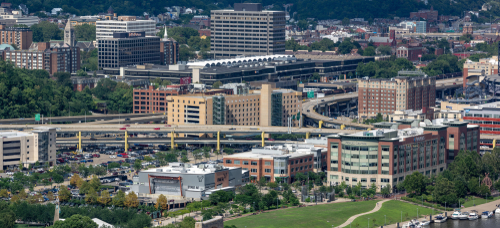
The Pennsylvania House Transportation Infrastructure Task Force is recommending a widespread funding reform to remedy shortfalls for transportation improvements and maintenance partially linked to an excess of Motor License Fund money used for non-transportation-related projects.
The task force report found that $4.5 billion had been diverted from the Motor License Fund to the Pennsylvania State Police since 2012-2013.
“Our review of the state’s transportation infrastructure revealed crumbling roads, failing bridges, aging railcars and buses, along with congested highways and inner-city gridlock,” said state Rep. Martina White (R-Philadelphia), task force chair. “Yet, despite legislation, like Act 89 of 2013, to raise funds for transportation, many projects have stalled, and maintenance has been delayed.”
The report showed that only 27 percent of Pennsylvania Department of Transportation (PennDOT) projects were completed in 2017 as a result of the monetary diversions.
Through the report, the task force found other contributing factors to decreased transportation funding, including the failure of the gas tax increase passed in 2007 to meet revenue projections, due, in part, to the rise of fuel-efficient vehicles and low fuel prices. The cost of infrastructure projects, however, has increased 2.25 percent since 2007, reflecting a loss of roughly $100 million in buying power each year.
Another hefty increase in the state’s transportation debt resulted from the passage of Act 44 of 2007, which required the Pennsylvania Turnpike Commission (PTC) to provide PennDOT with an annual $450 million for transportation capital needs. Because of this, the PTC had to debt finance those payments, leading to toll increases for 11 straight years and an increased debt of $13 billion that has reduced its rebuilding program by 13 percent. Until that is managed, the PTC cannot consider any potential expansion projects.
In July 2022, PTC’s annual obligation will drop to $50 million per year until 2057, which will create a large funding gap in the General Fund that state transportation officials say should be accounted for now in terms of redirection into transportation funds.
“As leaders, it is our responsibility to take action to strengthen the foundation of what moves Pennsylvania forward,” White said. “We may be a diverse state with competing rural and urban interests, but we rely on one another to be competitive nationally and internationally. We are ‘one’ Pennsylvania that shares a vision for a modern transportation infrastructure.”
The House Transportation Infrastructure Task Force was created in July 2019 to give a comprehensive overview of Pennsylvania’s transportation system and funding.
Recommendations the task force noted in the report include, first and foremost, quickly ending the diversion of transportation funds to state police funding.
“By ending these diversions, transportation priorities would be completed, and new projects could begin,” the report said.
Additional recommendations include giving counties and regions the ability to consider local fundraising solutions, such as Act 89, which authorizes local counties to impose a $5 additional vehicle registration fee to fund local transportation projects. Consolidating the private sector permitting process for large projects, which would improve efficiencies to repair hundreds of roads and bridges simultaneously allowing PennDOT to manage programs instead of smaller, individual projects. The task force also suggested that PennDOT is given explicit authority to implement the design-build method for projects larger than $100 million.
PennDOT officials have been urging the state government to address urgent funding needs in recent years and are appreciative of this next step that the task force has recognized.
“We look forward to working with the Legislature and working towards better transportation funding and, ultimately, better transportation for Pennsylvania,” PennDOT said in a statement.